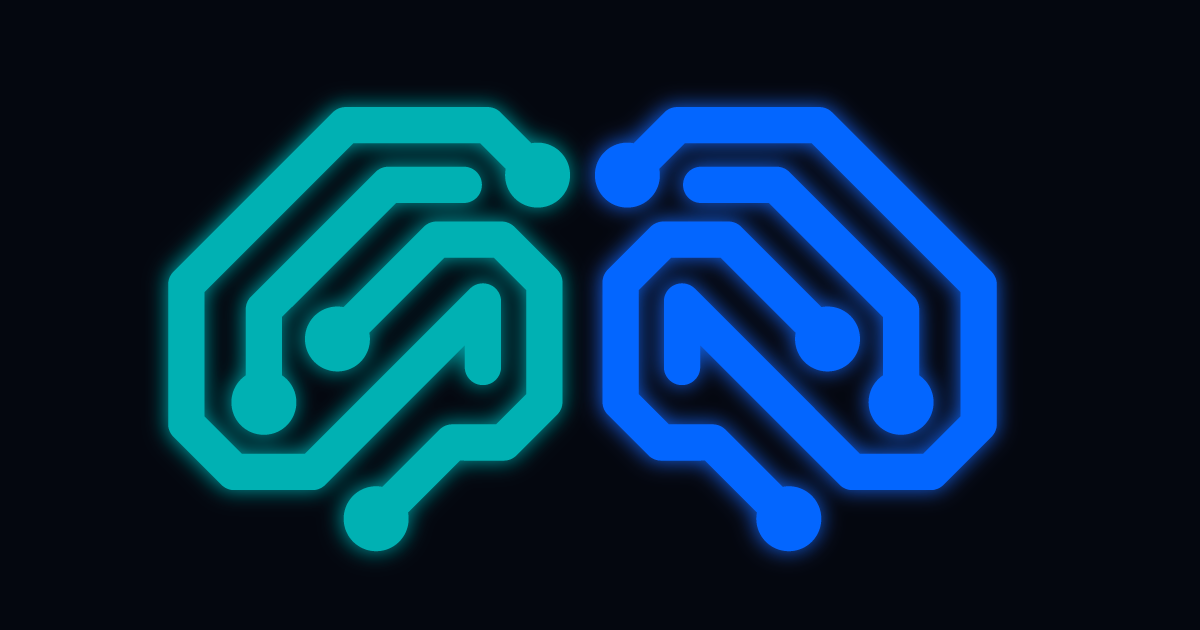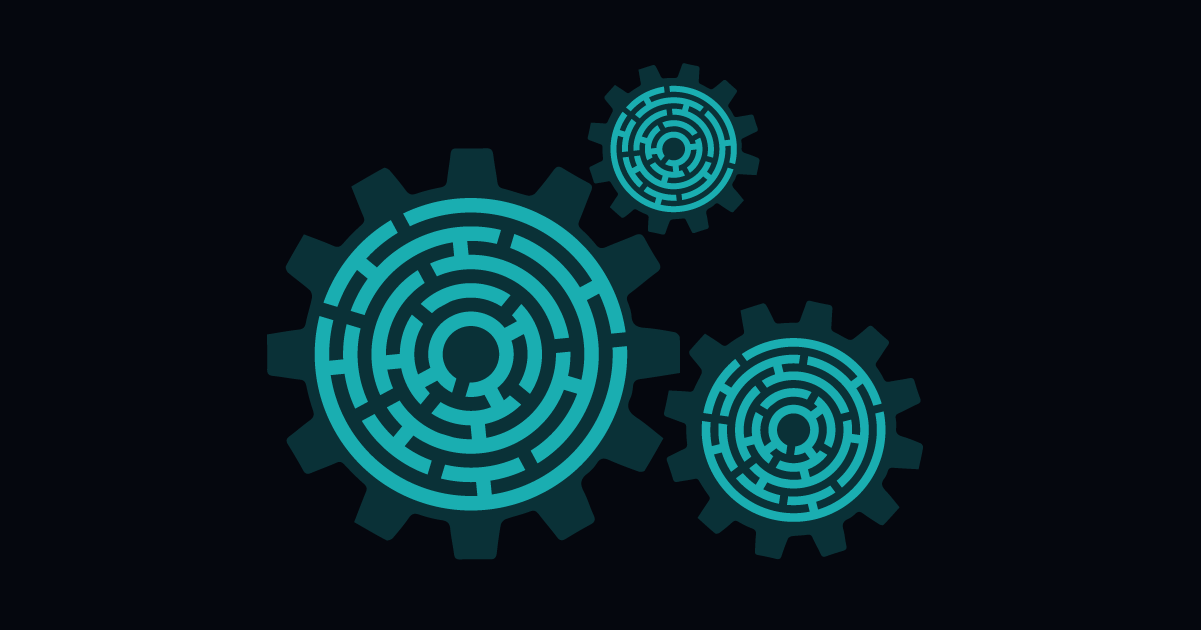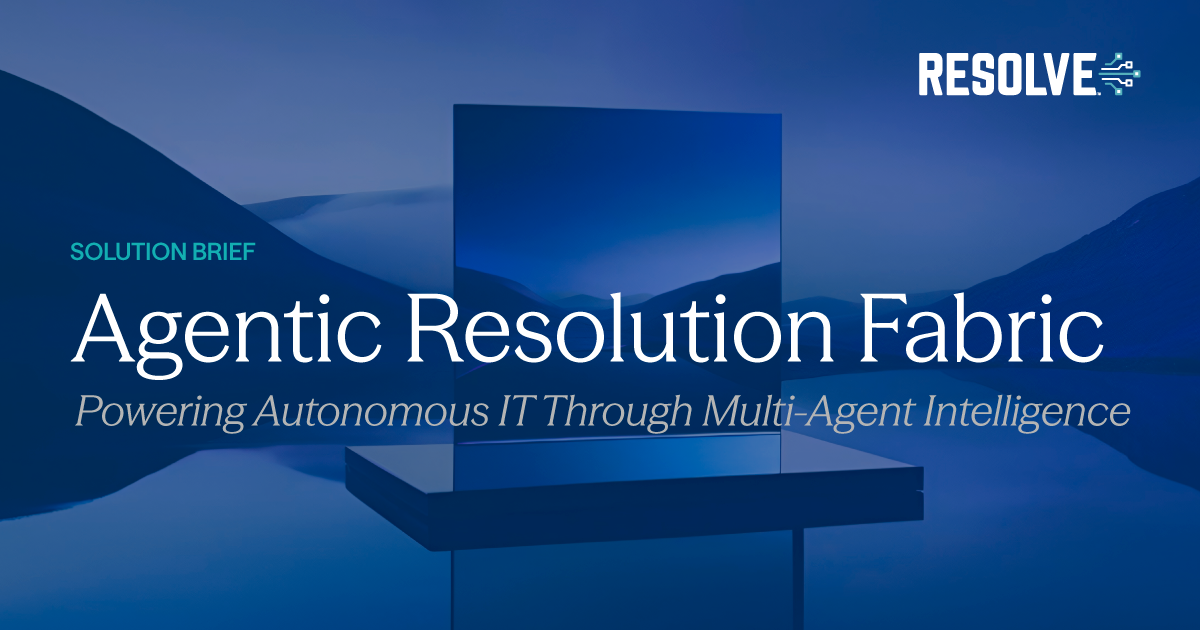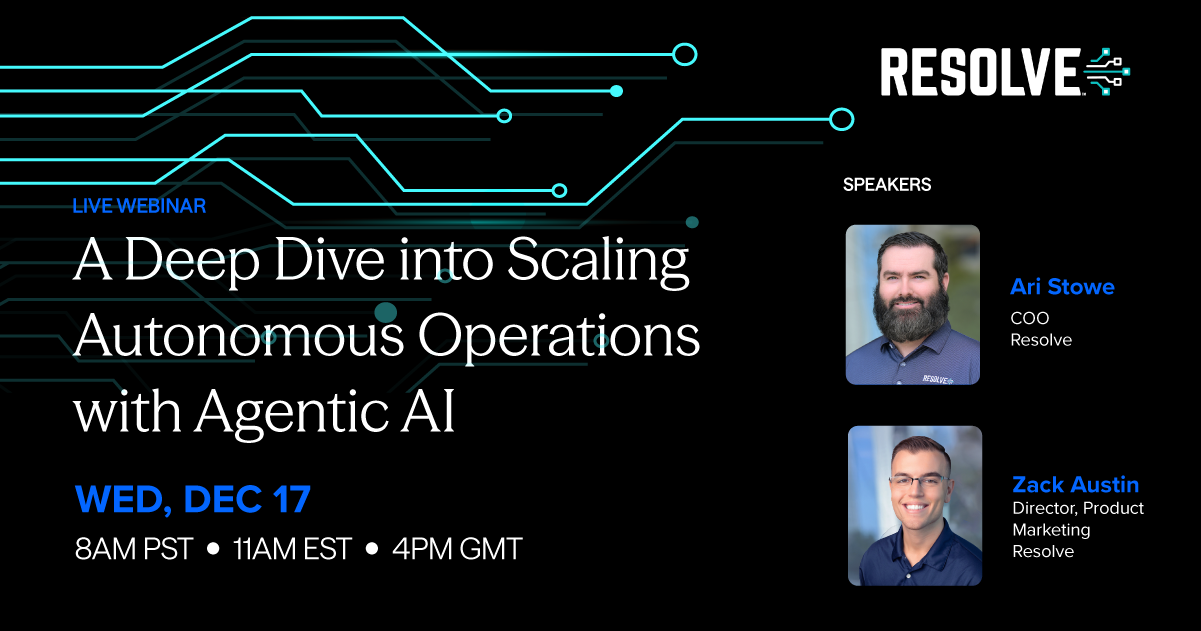
Agentic Workflows That Actually Work (and Don’t Take Six Months to Deploy)
Subscribe to receive the latest content and invites to your inbox.
There’s a hard truth in IT: everyone wants automation, but nobody wants to wait six months (or more) to get it off the ground. Traditional automation initiatives are often bogged down in backlog, scripting complexity, and integration chaos. That’s exactly what makes agentic workflows different.
Agentic workflows don’t just automate tasks; they act. They understand intent, operate autonomously, and improve over time. At Resolve, we believe these workflows are the foundation of a Zero Ticket IT strategy.
And the best part? You can skip the tiger team, the ambiguous roadmap, and the slow death of momentum. This actually ships.
In this post, we’ll break down five of the most impactful agentic workflows that you can deploy in weeks, not quarters. These aren't theoretical; they’re in use today and delivering ROI with RITA, our agentic IT assistant built for speed and scale.
What Makes a Workflow “Agentic”?
An agentic workflow goes beyond static scripts or decision trees. It’s intelligent, autonomous, and proactive. In other words, agentic AI is designed to achieve goals with minimal human input, interpreting data, making decisions, and executing actions that typically require skilled intervention.
Here’s what sets an agentic workflow apart:
- Intent-driven: Understands the purpose behind the task, not just the input.
- Context-aware: Pulls in real-time data (e.g., user profile, device state, network config) to guide decisions.
- Autonomous: Executes the task from end to end with minimal or no human intervention.
- Continuous improvement: Learns from past outcomes and user feedback to refine logic over time.
Now let’s dig into the five workflows that embody this model and deliver immediate value.
1. Password Resets & Account Unlocks
Why it matters: This single category drives up to 30% of IT service desk volume in some organizations. It’s a top timewaster for both employees and L1 support.
The agentic workflow:
- Detects when a user is locked out or needs a reset (via chat, portal, or login failure triggers)
- Verifies identity using contextual signals (MFA, device data, SSO)
- Executes the password reset or unlock against Active Directory, Okta, or another IdP
- Confirms resolution with the user and logs the interaction
Results:
- Up to 90% deflection for this ticket type
- Round-the-clock resolution (no waiting for the help desk to open)
- Improved employee satisfaction and reduced downtime
This is often the first agentic workflow organizations deploy because the ROI is fast, the logic is clear, and the impact is felt immediately across the business and its customers.
READ MORE: IT Process Improvement Is Great... If You Can Find Someone to Build It
2. Access Requests
Why it matters: Access provisioning is a friction point for every new hire, contractor, or cross-functional team. Delays can stall productivity and imperil employee experience.
The agentic workflow:
- Accepts requests via chat or portal ("I need access to Salesforce")
- Checks user role, department, and identity context
- Matches request against predefined access policies
- Routes for dynamic approval (if required) or auto-provisions based on entitlement
- Audits and logs the action for compliance
Results:
- Faster time-to-productivity for new employees
- Reduced shadow IT from frustrated users working around delays
- Fewer access-related incidents and better audit posture
Because this workflow taps into existing identity and access management (IAM) policies, it’s a perfect candidate for automation without sacrificing control.
3. Software Installations & Licensing
Why it matters: Requests for basic software clog service queues even when licensing is straightforward. Manual fulfillment wastes time and often leads to inconsistent provisioning.
The agentic workflow:
- Accepts a request ("Install Zoom") from chat or self-service
- Verifies entitlement based on role, location, or policy
- Automatically installs via MDM or package manager (Intune, Jamf, SCCM)
- Updates license allocation systems and usage tracking
- Notifies the requester when it’s complete
Results:
- Zero-touch fulfillment for most software
- License reclamation and visibility into usage
- Less IT involvement, faster employee enablement
Agentic automation handles the full lifecycle, from request to license assignment, without human bottlenecks.
READ MORE: Got AI Fear? You Shouldn’t; It’s Coming for Your Busywork, Not Your Job
4. Email & Collaboration Tool Issues
Why it matters: Outlook errors, Teams login loops, calendar sync failures, and so on are high-frustration tickets with common root causes that frontline teams must repeatedly deal with.
The agentic workflow:
- Identifies issues from user input or system monitoring
- Runs diagnostics (e.g., mailbox status, cache corruption, sync errors)
- Applies known fixes: clear cache, re-authenticate, update configs, etc.
- Guides user through any required steps (e.g., MFA refresh)
- Escalates with full diagnostics if issue persists
Results:
- Drastic reduction in L1 time spent on common issues
- Less user downtime and higher collaboration uptime
- Consistent, best-practice remediation steps every time
This is where the learning loop kicks in: the agentic workflow improves as it encounters new variations and expands its diagnostic capabilities.
5. VPN Troubleshooting & Remediation
Why it matters: VPN issues spike during remote work and outside business hours. Diagnosing these remotely is difficult and usually results in user downtime.
The agentic workflow:
- Detects failed VPN connections through logs or user input
- Validates endpoint status, client version, and network availability
- Performs remediation steps: restart service, push policy, reconnect (via Intune, Jamf, SCCM, etc.)
- Identifies policy violations or security concerns (e.g., outdated software)
- Escalates if hardware or ISP issues are detected
Results:
- Fewer helpdesk calls related to connectivity
- Self-healing resolution for known VPN issues
- Safer remote access with built-in policy checks
Because VPNs often intersect with security and compliance, this workflow provides both operational and governance benefits.
From Workflow to Strategy: The Zero Ticket IT Blueprint
These five agentic workflows don’t just shave minutes off support times; they reshape how work enters and flows through IT. Instead of routing every request through a ticket, we quickly, contextually, and autonomously resolve at the source.
When deployed together, these workflows can:
- Deflect 50% of all L1 ticket volume
- Reduce ITSM licensing costs by eliminating unnecessary fulfillers and approvers
- Improve SLAs, reduce MTTR, and elevate the employee experience
And because they’re pre-built and packaged with RITA, you can deploy all five in a matter of weeks, not quarters.
Ready to Start?
Every ticket resolved by automation is a ticket you never have to deal with. Every agentic workflow is a step toward a future where IT isn’t stuck reacting; it’s moving proactively and strategically.
If you’re ready to shift your service desk from backlog to breakthrough, these five agentic workflows are your first move.
Get started today!
→ Request a Demo
→ Read The Zero Ticket Future Manifesto






